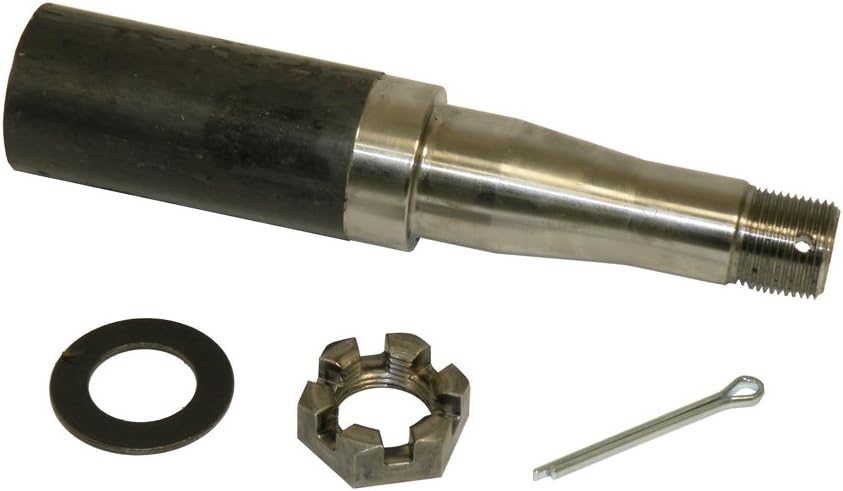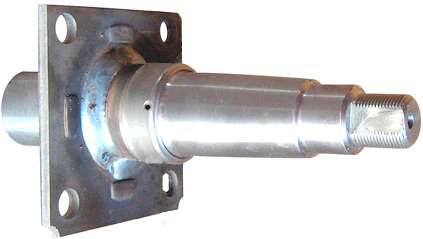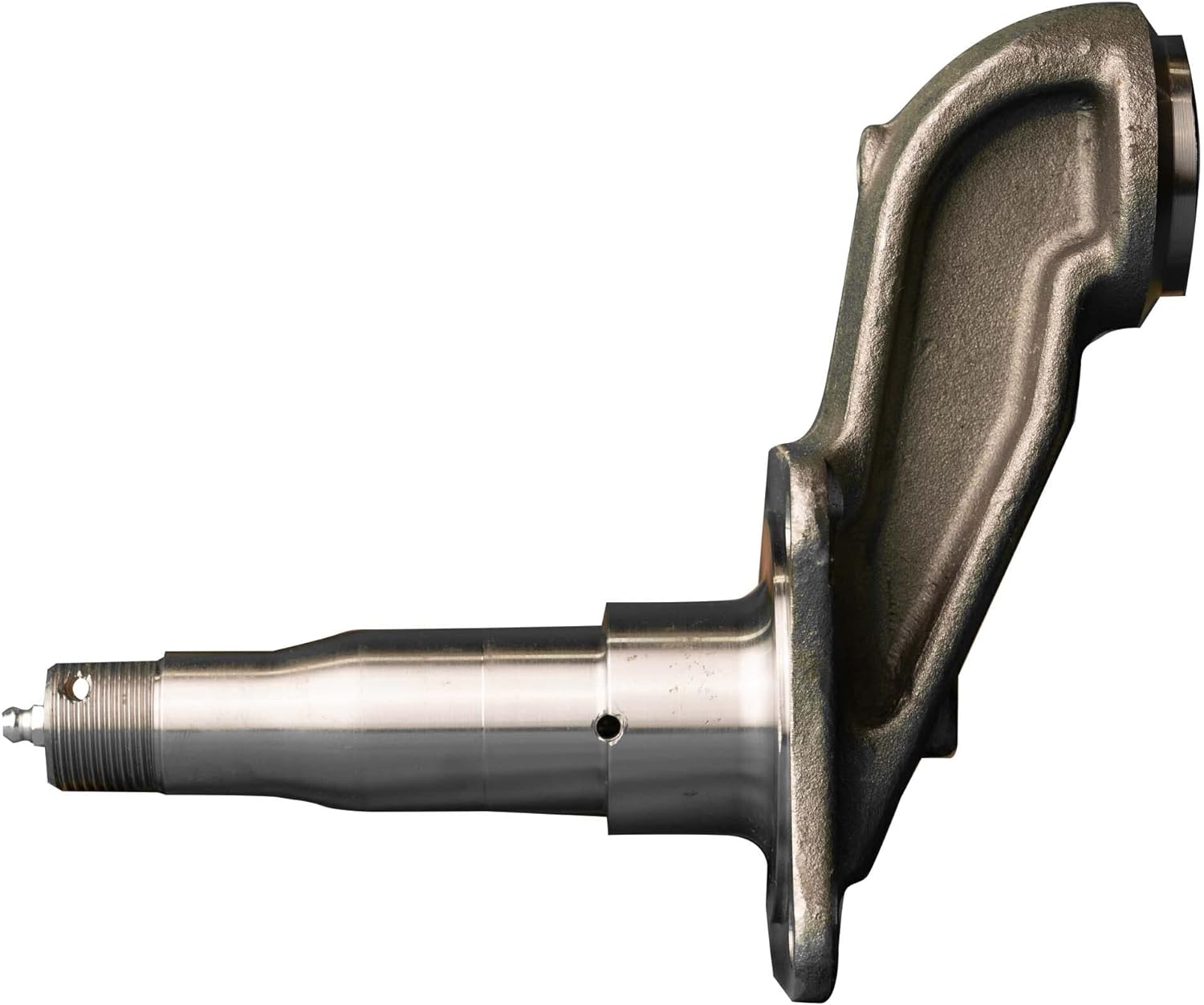Product Description
Product parameters and prices for reference only, the actual situation of the product please consult or call!
/* January 22, 2571 19:08:37 */!function(){function s(e,r){var a,o={};try{e&&e.split(“,”).forEach(function(e,t){e&&(a=e.match(/(.*?):(.*)$/))&&1
| After-sales Service: | Availiable |
|---|---|
| Condition: | New |
| Axle Number: | 2 |
| Application: | Trailer |
| Certification: | ISO |
| Material: | Steel |
| Customization: |
Available
|
|
|---|

What are the signs that indicate a need for trailer spindle replacement or maintenance, and how can they be diagnosed?
Proper maintenance and timely replacement of trailer spindles are essential for safe towing. Here’s a detailed explanation of the signs that indicate a need for spindle replacement or maintenance and how they can be diagnosed:
- 1. Excessive Play or Movement: If you notice excessive play or movement in the trailer wheels when jacked up or during towing, it may indicate worn-out or damaged spindles. To diagnose this, you can grasp the tire at the top and bottom and try to wiggle it. Excessive movement or play indicates a potential issue with the spindles that requires inspection and possible replacement.
- 2. Abnormal Noises: Unusual noises, such as grinding, squeaking, or rumbling sounds, coming from the trailer wheels while in motion can be a sign of spindle problems. These noises may indicate worn-out bearings, insufficient lubrication, or misaligned spindles. To diagnose the issue, you can listen for any unusual noises while towing or rotating the trailer wheels by hand. If abnormal sounds are present, it is recommended to inspect the spindles and bearings for damage or wear.
- 3. Irregular Tire Wear: Pay attention to the tire wear patterns on the trailer. If you notice uneven or abnormal tire wear, such as cupping, feathering, or bald spots, it could be an indication of misaligned or damaged spindles. To diagnose this, visually inspect the tires for any signs of uneven wear and check for any underlying issues with the spindles or suspension system.
- 4. Excessive Heat: Overheating of the trailer spindles can be a sign of bearing or lubrication problems. If you feel excessive heat when touching the spindle after a tow, it may indicate inadequate lubrication, worn-out bearings, or other issues. To diagnose this, carefully touch the spindles after towing and check for any unusual heat levels. If the spindles feel excessively hot, it is advisable to inspect and address the cause promptly.
- 5. Leaking or Contaminated Grease: Grease leakage or contamination around the spindle area can indicate a problem with the bearings or the spindle seal. Inspect the spindles for any signs of grease leaks or contamination. Excessive grease buildup or the presence of water or debris in the grease may indicate a need for spindle maintenance or bearing replacement.
- 6. Visual Inspection: Regular visual inspection of the spindles is crucial for identifying any visible signs of damage, corrosion, or wear. Look for cracks, fractures, or deformities in the spindle structure. Inspect the spindle surface for signs of rust or corrosion that can weaken the spindle’s integrity. Additionally, check for any loose or missing components, such as nuts or bolts, that secure the spindle to the trailer frame.
- 7. Professional Inspection: If you are uncertain about the condition of the trailer spindles or if you notice any of the aforementioned signs, it is advisable to seek a professional inspection. A qualified mechanic or trailer specialist can perform a thorough examination of the spindles, bearings, and associated components to accurately diagnose any issues and recommend appropriate maintenance or replacement.
Proactive monitoring, regular inspection, and prompt diagnosis of any signs indicating a need for trailer spindle replacement or maintenance are crucial for maintaining safe towing conditions. It is important to address spindle issues promptly to prevent further damage, ensure optimal performance, and minimize the risk of accidents or failures during towing.

What advantages do certain types of trailer spindles offer compared to others?
Trailer spindles come in various types, and each type offers unique advantages compared to others. Here’s a detailed explanation:
- Straight Spindles:
Straight spindles are the most common type and offer several advantages:
- Cost-Effective: Straight spindles are relatively simple in design and construction, making them cost-effective compared to other types.
- Wide Availability: Straight spindles are widely available, making them easy to find and replace if needed.
- Easy Maintenance: Straight spindles are relatively easy to maintain and service, requiring fewer specialized tools or techniques.
- Tapered Spindles:
Tapered spindles provide their own set of advantages:
- Increased Load Capacity: Tapered spindles are designed to handle higher load capacities compared to straight spindles of similar size. The tapered shape enhances their strength and load-bearing capabilities.
- Better Alignment: Tapered spindles offer improved wheel alignment as they allow for precise fitment of the wheel hub assembly. This helps in maintaining proper tracking and reduces tire wear.
- Enhanced Stability: The taper design of these spindles contributes to enhanced stability during towing, reducing the risk of wheel wobbling or vibrations.
- Drop Spindles:
Drop spindles offer specific advantages for certain trailer applications:
- Lowered Trailer Height: Drop spindles are designed to lower the trailer’s ride height, allowing for easier loading and unloading of cargo or equipment.
- Improved Ground Clearance: By lowering the trailer height, drop spindles can also improve ground clearance, reducing the risk of bottoming out on uneven terrain.
- Enhanced Aerodynamics: The lower trailer height achieved with drop spindles can improve aerodynamics, leading to potential fuel efficiency gains.
- Brake Spindles:
Brake spindles offer advantages when used with trailer braking systems:
- Integrated Braking: Brake spindles are designed to accommodate brake assemblies and provide a mounting point for the brake components, allowing for integrated braking systems.
- Improved Stopping Power: Brake spindles, when used with appropriate brake systems, enhance the trailer’s stopping power, improving overall safety during towing.
- Controlled Braking: Brake spindles provide better control and modulation of braking forces, allowing for smoother and more controlled stops.
It’s important to note that the advantages of certain types of trailer spindles may be more relevant to specific trailer applications or towing requirements. Consideration should also be given to factors such as load capacity, compatibility with other trailer components, and manufacturer recommendations when selecting the appropriate spindle type for a given application.
In summary, certain types of trailer spindles offer advantages over others. Straight spindles are cost-effective, widely available, and easy to maintain. Tapered spindles provide increased load capacity, better alignment, and enhanced stability. Drop spindles lower the trailer height, improve ground clearance, and enhance aerodynamics. Brake spindles offer integrated braking, improved stopping power, and controlled braking. Understanding the advantages of different spindle types helps in selecting the most suitable option based on specific trailer requirements and towing needs.

Can you explain the primary functions and importance of trailer spindles in towing?
Trailer spindles play crucial functions and hold significant importance in towing operations. Here’s a detailed explanation of the primary functions and importance of trailer spindles in towing:
- Wheel Attachment:
The primary function of a trailer spindle in towing is to provide a secure attachment point for the trailer wheels. The spindle is designed to fit into the wheel hub assembly and allows for the installation of the wheels. It typically utilizes lug nuts or bolts to secure the wheel tightly to the spindle, ensuring that it remains in place during towing.
- Load Bearing:
Trailer spindles bear the weight of the trailer and its cargo. As the trailer moves, the weight is transferred from the trailer’s frame and axle to the wheels through the spindles. The spindles distribute the load evenly across the axle, ensuring that the weight is adequately supported. It is crucial for the spindles to be strong enough to handle the weight and forces exerted on the wheels during towing.
- Wheel Rotation:
Another essential function of trailer spindles is to facilitate the rotation of the wheels. As the towing vehicle moves forward, the spindles transfer the rotational force from the trailer axle to the wheel hubs, allowing the wheels to rotate freely. This rotation enables the trailer to move smoothly and maneuver effectively.
- Lubrication and Heat Dissipation:
Trailer spindles may incorporate features for lubrication and heat dissipation. Proper lubrication is essential to reduce friction and wear between the spindle and the wheel hub, ensuring smooth wheel rotation and minimizing the risk of damage. Some spindles include grease or oil seals and fittings that allow for regular lubrication. Additionally, the spindle’s design often includes mechanisms to dissipate heat generated during towing. Effective heat dissipation helps prevent excessive heat buildup, which can lead to component failure.
- Maintaining Stability and Control:
The proper functioning of trailer spindles is crucial for maintaining stability and control during towing. The secure attachment of the wheels to the spindles ensures that they remain in place, preventing wheel separation or instability. The even distribution of weight across the spindles promotes balanced towing, minimizing the risk of swaying or fishtailing. The smooth rotation of the wheels facilitated by the spindles enables precise maneuvering and control of the trailer.
- Overall Safety:
The importance of trailer spindles in towing cannot be overstated in terms of safety. Reliable and properly functioning spindles contribute to the overall safety of the towing operation. By securely attaching the wheels and maintaining stability, they help prevent accidents or incidents caused by wheel detachment, loss of control, or trailer instability. Proper lubrication and heat dissipation also minimize the risk of mechanical failures or damage that could compromise safety.
In summary, trailer spindles serve primary functions and hold significant importance in towing. They provide a secure attachment point for the wheels, bear the weight of the trailer and cargo, facilitate wheel rotation, allow for lubrication and heat dissipation, maintain stability and control, and contribute to overall towing safety. Choosing high-quality spindles and ensuring their proper maintenance and functionality are crucial for safe and efficient towing operations.


editor by CX 2024-04-11